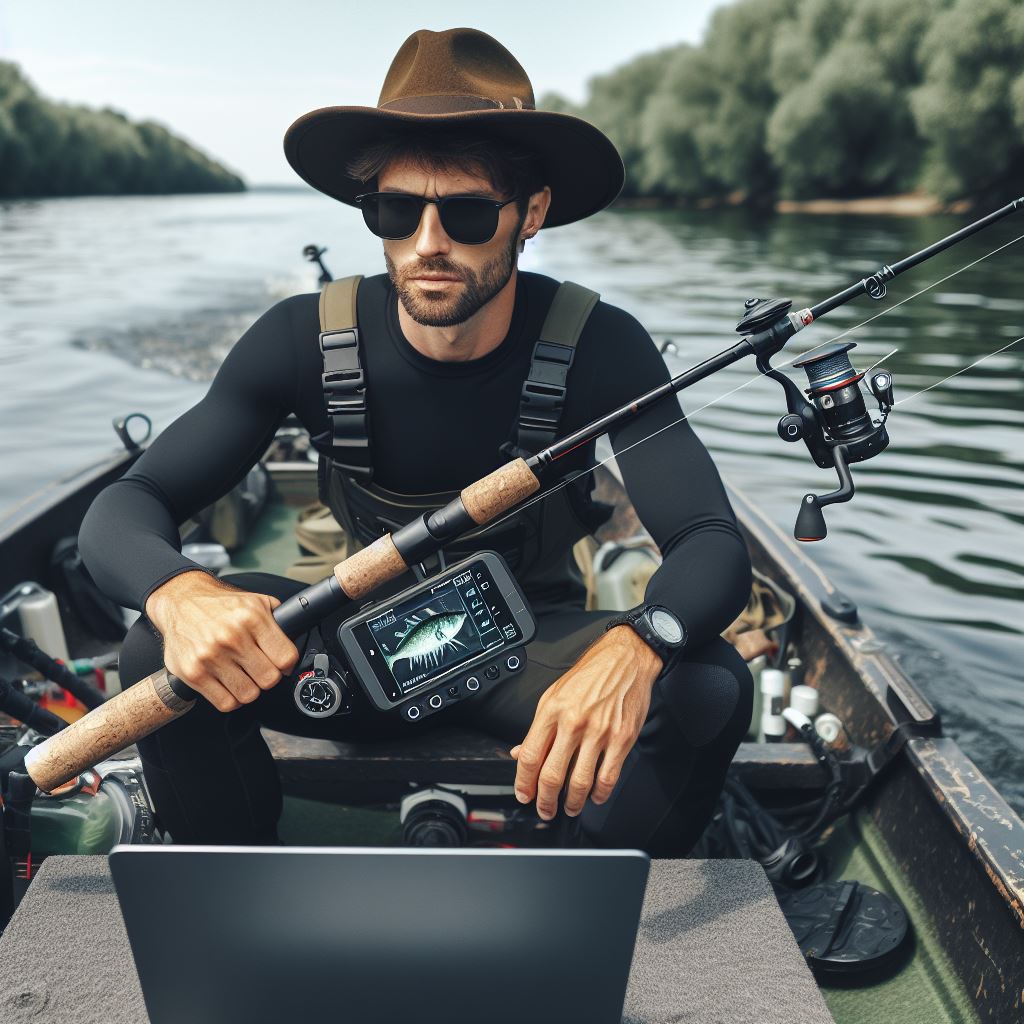Introduction
The fishing industry in Australia is a vital sector, contributing significantly to the country’s economy.
With advancements in technology, various sectors are experiencing improvements and efficiencies.
The Australian fishing industry plays a crucial role in providing employment opportunities and meeting the country’s seafood demands.
It comprises commercial fishing operations, aquaculture, and recreational fishing.
In recent years, technology has become increasingly integrated into the fishing industry, revolutionizing various sectors.
These advancements have enhanced sustainability, efficiency, and profitability.
One sector benefitting from modern technology is fishing vessels.
They now utilize advanced sonar systems and fish tracking devices to locate and monitor fish populations accurately.
This allows fishermen to optimize their time and efforts, leading to better catches and reduced environmental impact.
Additionally, the adoption of satellite positioning systems and navigational aids has greatly improved vessel safety.
These technologies enable precise navigation, especially in remote areas, minimizing the risk of accidents and ensuring the safety of crew members.
Furthermore, technology has revolutionized fish farming, or aquaculture, in Australia.
Aquaculture operations now employ automated feeding systems, water quality monitoring sensors, and remote surveillance cameras.
These advancements ensure optimal conditions for fish growth, reducing manual labor and increasing production efficiency.
In the processing and packaging sector, modern technology has facilitated automation and precision.
Cutting-edge machinery and robotics are used for filleting, packaging, and quality control, resulting in consistent and high-quality seafood products.
Overall, technology has played a crucial role in transforming and improving various sectors within Australia’s fishing industry.
These advancements have enhanced sustainability, efficiency, and safety, reflecting the industry’s commitment to adapt and thrive in the modern world.
Technological advancements in fishing equipment
Modern technology has transformed the fishing industry in Australia, revolutionizing the way fishermen catch fish and navigate the vast ocean.
The shift from traditional fishing gear to modern equipment has paved the way for increased efficiency, sustainability, and profitability.
Let’s take a closer look at some of the key technological advancements in fishing equipment:
Sonar and GPS systems for navigation and fish detection
The advent of sonar and GPS systems has significantly enhanced the accuracy and effectiveness of navigation and fish detection.
Sonar technology uses sound waves to create images of underwater objects, allowing fishermen to pinpoint the exact location of fish.
GPS systems, on the other hand, enable precise navigation by providing real-time positional data, ensuring fishermen stay on course and avoid hazardous areas.
Advanced fishing nets and lines improve efficiency and sustainability
Traditional fishing nets often resulted in high bycatch rates and captured undersized or non-targeted species.
However, with the development of advanced fishing nets, such as those equipped with escape panels and selective mesh sizes, the industry has drastically reduced bycatch and improved sustainability.
These nets allow smaller fish to escape, protecting them and preserving the overall ecosystem.
Similarly, the introduction of high-strength, low-diameter fishing lines has improved efficiency.
These lines are able to withstand greater tension, allowing fishermen to catch larger fish without the need for heavy and cumbersome gear.
This not only increases the chances of success but also reduces the strain on the fishermen during long hours of fishing.
Automation and robotics streamline fishing processes
Automation and robotics have streamlined various fishing processes, making them more efficient and cost-effective.
For instance, automated longline systems can deploy hundreds or even thousands of fishing hooks simultaneously, eliminating the need for manual labor.
This not only saves time but also reduces labor costs, allowing fishermen to focus on other important tasks.
Robotic systems have also been developed for tasks such as baiting, hook removal, and fish sorting.
These systems are designed to handle fish with care, reducing stress and improving fish quality.
Additionally, they eliminate the risk of injuries to fishermen while handling sharp hooks or aggressive fish.
Enhanced fish-finding instruments increase catch rates
Modern fish-finding instruments, such as echo sounders and fish finders, utilize advanced sonar technology to identify schools of fish and their depth distribution.
By analyzing the echoes of sound waves, fishermen are able to determine the size and density of fish populations.
This information is crucial in determining fishing spots, maximizing catch rates, and reducing unnecessary time spent searching for fish.
Improved communication systems for efficient fishing operations
Effective communication is crucial in ensuring smooth fishing operations, especially when operating in remote or offshore locations.
Modern technology has introduced robust communication systems, including satellite phones and radios, that enable fishermen to stay connected and coordinate their activities.
This not only enhances safety but also allows for real-time information exchange, such as weather updates and market prices.
Overall, technological advancements have revolutionized the fishing industry in Australia.
From the use of sonar and GPS systems for navigation and fish detection to the development of advanced fishing nets and lines, these advancements have significantly improved efficiency and sustainability.
Furthermore, automation, enhanced fish-finding instruments, and improved communication systems have streamlined processes and ensured a more profitable and safer fishing experience.
With continuous advancements in technology, the future of Australia’s fishing industry looks promising.
Read: Biodiversity: Enviro Manager’s Role in AU
Innovations in fish farming
Australia’s fishing industry has experienced significant advancements in recent years, with the rise of aquaculture taking center stage.
This innovative approach to fish farming has revolutionized the way fish are produced and has brought about numerous benefits for both producers and consumers.
The rise of aquaculture in Australia
Aquaculture, also known as fish farming, has become increasingly popular in Australia due to its numerous advantages over traditional fishing methods.
This method involves cultivating fish in controlled environments, such as ponds, tanks, or cages, rather than relying solely on catching fish from natural habitats.
One of the main reasons for the rise of aquaculture in Australia is the ability to meet the growing demand for seafood.
With wild fish stocks depleting and concerns about overfishing, aquaculture provides a sustainable solution to ensure a steady supply of fish.
Furthermore, fish farming allows for better control over the quality and quantity of fish produced.
Farmers can optimize feeding practices, water quality, and disease prevention measures to ensure healthier and more robust fish stocks.
The use of automated feeding systems and monitoring devices
Modern technology has played a crucial role in the success of aquaculture in Australia.
Automated feeding systems have made it possible for farmers to provide the precise amount of food required for their fish, ensuring optimal growth and reducing waste.
These systems are equipped with sensors and timers, which regulate feeding schedules and monitor the fish’s behavior to assess their appetite.
By automating the feeding process, farmers can save time and resources while ensuring that their fish receive adequate nutrition.
In addition to automated feeding systems, monitoring devices are used to track various environmental parameters.
Water temperature, oxygen levels, and pH balance can be continuously monitored to ensure optimal conditions for fish growth.
This data allows farmers to make timely adjustments and prevent any adverse effects on their fish stocks.
The benefits of controlled environments and increased production
One of the key advantages of aquaculture is the ability to create controlled environments for fish.
Fish farms provide protection from predators, diseases, and unfavorable weather conditions, which can significantly affect wild fish populations.
This controlled environment promotes healthier and faster growth of fish, resulting in higher production rates.
Increased production means a more sustainable seafood industry and a reduced reliance on capturing wild fish.
As a result, aquaculture reduces the impact on natural ecosystems and contributes to the preservation of marine biodiversity.
Aquaculture also offers economic benefits to Australia’s fishing industry.
Increased production leads to job creation and economic growth, as fish farms require a skilled workforce to operate and maintain the facilities.
Moreover, the ability to produce fish year-round ensures a stable income for farmers and promotes regional development.
All in all, the rise of aquaculture in Australia has brought about significant innovations in the fishing industry.
Through the use of automated feeding systems, monitoring devices, and controlled environments, fish farming has become a sustainable and lucrative alternative to traditional fishing practices.
As technology continues to advance, it is likely that further advancements will be made, further enhancing the efficiency and productivity of Australia’s fish farming industry.
Read: Soil Health: Top Priority for AU Enviro Experts
Data-Driven Fishing Practices
Fishing has been a significant industry in Australia for centuries, with technological advancements revolutionizing the way it is conducted.
One of the key driving forces behind this transformation is the use of data analytics.
The fishing industry in Australia has embraced data analytics to optimize operations and improve sustainability.
By leveraging the power of big data, fishing companies can make more informed decisions and ensure responsible resource management.
Exploring the Use of Data Analytics
Data analytics involves the collection, processing, and analysis of large volumes of data to extract valuable insights.
In the fishing industry, this practice helps identify patterns, trends, and correlations that can enhance the efficiency and productivity of fishing operations.
For example, by analyzing historical catch data and environmental variables, such as sea temperature and currents, fishing companies can predict the best fishing grounds and seasons for specific species.
This information helps plan fishing trips more effectively, reducing wastage and avoiding overfishing.
Your Personalized Career Strategy
Unlock your potential with tailored career consulting. Get clear, actionable steps designed for your success. Start now!
Get StartedIntegration of Sensors and Smart Devices
Another aspect of modern technology in the fishing industry is the integration of sensors and smart devices in fishing vessels.
These devices provide real-time data that can be used for decision-making and improving operational efficiency.
Sensors can be attached to fishing nets to track their location and monitor their performance.
By analyzing data on net depth and trawling speed, fishing companies can optimize their fishing techniques to minimize bycatch and maximize target species’ catch.
Fishing vessels are also equipped with smart devices that collect data on fuel consumption and engine performance.
By monitoring these metrics, companies can identify inefficiencies and take appropriate measures to reduce fuel consumption, resulting in cost savings and reduced carbon emissions.
Real-Time Data Analysis
Real-time data analysis is revolutionizing the fishing industry by providing up-to-the-minute insights that enable dynamic decision-making.
With advanced technology, fishing vessels can transmit data back to the shore in real-time, allowing managers to make informed decisions instantly.
For example, if a vessel is approaching its fishing quota, real-time data analysis can help determine whether to continue fishing or return to port.
This avoids unnecessary fishing, reducing the risk of overfishing and promoting sustainable practices.
Real-time data analysis also enables immediate response to changes in ocean conditions and fish behavior.
By analyzing data on water temperature, salinity, and fish movements, fishing companies can adapt their strategies accordingly, ensuring optimal catch rates while minimizing environmental impact.
The use of data analytics, integrated sensors, and smart devices has revolutionized the fishing industry in Australia.
By harnessing the power of data, fishing companies can make more informed decisions, improve resource management, and promote sustainable fishing practices.
With continuous advancements in technology, the future of the fishing industry looks promising, ensuring a balance between ecological preservation and economic growth.
Read: Renewable Energy in AU Farms: Enviro Impact

Gain More Insights: The Daily Life of an Aussie Forester
Technology for sustainable fishing
When it comes to the fishing industry, sustainability is of utmost importance.
The use of technology has revolutionized the way we fish and has contributed to the goal of sustainable practices.
The importance of sustainability in the fishing industry
Sustainability is vital for the fishing industry to ensure the long-term health and viability of marine ecosystems.
It involves managing fishing practices to prevent overfishing and protect vulnerable species.
By implementing sustainable fishing practices, we can ensure that fish populations remain stable, ecosystems are protected, and future generations can continue to enjoy the benefits of the ocean.
The use of drones for monitoring and surveillance
Drones have emerged as a powerful tool in the fishing industry for monitoring and surveillance purposes. These unmanned aerial vehicles provide a cost-effective and efficient way to monitor fishing activities.
Drones equipped with high-resolution cameras can capture real-time footage, allowing authorities to observe fishing vessels and detect any illegal or unsustainable activities. This technology helps enforce regulations effectively and combat illegal fishing practices.
Furthermore, drones can also be utilized for monitoring marine protected areas and detecting environmental changes that may affect fish populations. They provide crucial data for informed decision-making and resource management.
The adoption of satellite tagging techniques for studying fish behavior and migration patterns
Modern technology has allowed for the adoption of satellite tagging techniques to study fish behavior and migration patterns.
By attaching satellite tags to individual fish, researchers can gather valuable data.
These tags can transmit information such as location, depth, and temperature, providing insights into fish behavior, migration routes, and breeding grounds.
This information is crucial for understanding fish populations and developing effective conservation strategies.
Satellite tagging technology has revolutionized our understanding of fish behavior, enabling us to make informed decisions regarding fishing practices and marine protection.
Technology has played a pivotal role in promoting sustainability in Australia’s fishing industry.
The use of drones for monitoring and surveillance, as well as satellite tagging techniques for studying fish behavior and migration patterns, have significantly contributed to sustainable fishing practices.
By harnessing the power of technology, we can ensure that our oceans remain bountiful and that future generations can enjoy the benefits of a thriving marine ecosystem.
Sustainable fishing is not just a goal but a necessity for the well-being of our planet.
Read: Tech Advances in Enviro Management: AU Focus
Delve into the Subject: Eco-Friendly Innovations in Aussie Agriculture
Discover More: A Day in the Life: Australian Forester Q&A
Challenges and Future Prospects: Modern Tech in Australia’s Fishing Industry
Implementing modern technology in the fishing industry poses a set of unique challenges that need to be addressed to ensure its successful integration and adoption.
Stand Out with a Resume That Gets Results
Your career is worth more than a generic template. Let us craft a resume and cover letter that showcase your unique strengths and help you secure that dream job.
Get HiredChallenges of Implementing Modern Tech
- Lack of technology awareness and knowledge among fishing industry professionals can hinder the implementation process.
- Insufficient financial resources can limit the adoption of modern tech solutions, especially for small-scale fishers.
- The remote and unpredictable nature of fishing operations can pose logistical challenges for technology deployment and maintenance.
- Resistance to change and traditional practices can slow down the adoption of modern tech in the industry.
- Data management and cybersecurity concerns need to be addressed to ensure the integrity and privacy of sensitive information.
Addressing these challenges is crucial to overcome the barriers in implementing modern technology in the fishing industry.
Potential Concerns Regarding Job Displacement and Industry Disruption
- As technology automated processes, there might be concerns about job displacement within the fishing industry.
- Overdependence on technology could lead to a reduction in traditional fishing practices and lost cultural heritage.
- Adopting modern tech might favor large-scale commercial fishing companies, potentially disadvantaging smaller fishers.
- Industry disruption due to the rapid advancement of technology may result in a significant shift in the dynamics of the sector.
- Ensuring a fair transition and proper training opportunities can help alleviate concerns of job displacement and industry disruption.
Future Advancements and Opportunities in the Sector
- The integration of sensors, artificial intelligence, and advanced analytics can improve fishery management and sustainability.
- Real-time data collection and analysis can enhance decision-making processes and enable more efficient resource allocation.
- Proximity and remote sensing technologies can help monitor fishing activities and enforce regulations to combat illegal fishing.
- Unmanned aerial vehicles (UAVs) and satellites can provide valuable data for detecting and predicting fish populations and behavior.
- Collaborative efforts between fishers, scientists, and technology developers can lead to innovative solutions that benefit the entire industry.
While challenges exist, the integration of modern technology in Australia’s fishing industry presents numerous opportunities for growth and sustainability.
Addressing the challenges, while mitigating potential concerns, will be crucial to ensure a successful transition to a technologically advanced fishing sector.
By embracing innovation, the industry can improve efficiency, protect marine resources, and secure a prosperous future for fishers and the environment alike.
Explore Further: Mining Engineer Paths in Australian Agriculture
Delve into the Subject: Degree Paths for AU’s Future Enviro Managers
Conclusion
In closing, modern technology has had a significant impact on Australia’s fishing industry.
With the advent of advanced equipment and data-driven techniques, fishing has become more efficient, sustainable, and economically viable.
The introduction of GPS systems, sonar technology, and advanced fishing gear has revolutionized the industry, allowing fishermen to work smarter, not harder.
The use of technology has improved the accuracy of fishing practices, resulting in better targeting of fish populations and reduced bycatch.
This has contributed to the overall sustainability of the industry, ensuring that fish stocks are not depleted and marine ecosystems remain healthy.
Additionally, the ability to collect and analyze real-time data has enabled fishermen to make informed decisions regarding fishing locations and strategies, maximizing their catch and minimizing wasted efforts.
Furthermore, the integration of modern technology has opened up new opportunities for economic growth in the fishing industry.
With enhanced efficiency and higher-quality catches, fishermen can command better prices for their products, thereby increasing their income and supporting local economies.
The adoption of technology has also created new job opportunities in the field of marine technology, driving innovation and driving further economic development.
As the fishing industry continues to transform and evolve, it is crucial for stakeholders to embrace and fully utilize modern technology.
Embracing technology will ensure the industry’s long-term viability by optimizing fishing practices, minimizing environmental impacts, and maximizing economic returns.
As technological advancements continue, it is important for Australia’s fishing industry to stay at the forefront and adapt to the ever-changing landscape.
By doing so, the industry can continue to thrive and contribute to the well-being of both local communities and the broader economy.




